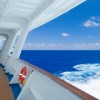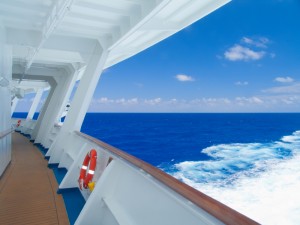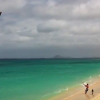By Jane Bradley
Published on Saturday 7 January 2012 03:14
TRAVEL companies are gearing up for their busiest time of the year as more than a million would-be holidaymakers book summer breaks to combat the winter blues.
But travel experts warned that the usual January rush to secure a summer holiday would not be as strong as usual this year because of a combination of the poor economic situation and a trend for people to book breaks independently closer to the time of travel, rather than reserving spots on package holidays months in advance.
The usual rush to book immediately after Christmas and before New Year has come later this year, as cash-strapped consumers opt to defer their bookings to later in January – perhaps until after their first pay day of the year.
The Association of British Travel Agents (ABTA) said up to a quarter of people will book their summer holiday in January or early February.
“January is always a very busy month for booking holidays,” said an ABTA spokeswoman. “People wait for Christmas celebrations to be over and out of the way, then they get the January blues and want something later in the year to look forward to.”
It is thought bookings will continue to rise and will peak around so-called “Blue Monday” – 16 January – which is deemed to be the most depressing day of the year.
Sharon Munro, chief executive of Glasgow-based Barrhead Travel, said the company’s branches were already experiencing high volumes of sales.
“One of the most common reasons we hear from customers booking at this time of year is the Scottish winter, with many people growing tired of the cold, wet weather and dark mornings,” she said.
“However, another explanation is the sense of anticipation that people enjoy after having booked their holiday. With the festive season over, many of our customers like to have something else to look forward to.”
A spokeswoman for Thomas Cook added: “January is the busiest month of the year for holiday bookings and independent research has shown an overseas holiday is the number one spending priority for people in 2012.”
David Burling, managing director for Thomson and First Choice, which are owned by Tui Travel, said searches on its Thomson’s website were up by a quarter in January, compared to the same period last year – and added that many people were opting for all inclusive holidays, where their food, drink and entertainment is included in the initial price.
“So far this year, all inclusive holidays are proving very popular, as customers look to find the best value from their holidays and a way to control their holiday spending,” he said.
“We have found that despite the current economic climate people are unwilling to forgo their annual overseas holidays.”
But travel agents have suffered a tough time in recent months. Industry giant Thomas Cook recently announced plans to axe around 200 of its stores, just weeks after it was forced to turn to its banks for help – sparking fears of the company’s collapse.
Professor John Lennon, head of the tourism unit at Glasgow Caledonian University, said: “The lead time of people booking holidays – i.e. the gap between the booking and when they actually leave – has dropped dramatically in recent years to between just seven and 21 days. The days of six months of people dreaming about their summer break is, to a certain extent, a thing of the past.
“The economy is also a factor – whereas a few years ago, everyone would have taken one main holiday and a few short breaks during the year, that is now being cut back.”
But he warned that traditional travel agencies were being hit by an increasing trend to book holidays online, with people often opting to buy their flights and accommodation independently over the internet, rather than through travel companies.
Destinations such as the Cape Verde Islands off the coast of Western Africa, are thought to be a hot spot for this year as tourists shy away from the traditionally popular sun seeking destinations of Egypt and Tunisia due to political unrest in the countries over the past year.
European favourites, such as France, Spain, Italy and Greece are also likely to return to favour because the economic slump in the eurozone making the countries more affordable.
‘Cape Verde is a hot tip this year’
Thomas Cook’s holiday predictions for 2012:
“Spain will remain the favourite destination for British holidaymakers and we will also be seeing a rise in popularity for Tunisia and Egypt.
“Turkey remains popular. It offers great value to holidaymakers and its choice of accommodation and flexibility of regional departures and trip durations are also important.
“It’s an opportunity to experience new cultures and cuisines, and being outside of the eurozone certainly helps.
“Cape Verde is our hot tip for this year. It is a seven-hour flight and is often referred to as the ‘Caribbean closer to home’. Its relaxed pace of life makes it an ideal choice for British holidaymakers eager to make the most of their time off work.”
SOURCE: http://www.scotsman.com/news/scottish-news/edinburgh-east-fife/1m_holidaymakers_set_to_book_their_summer_getaways_1_2042540



